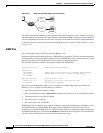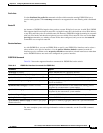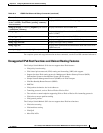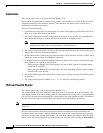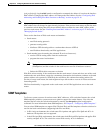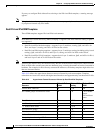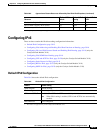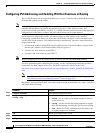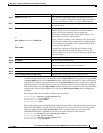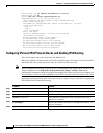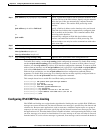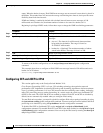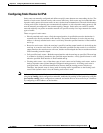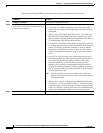
39-16
Cisco Catalyst Switch Module 3110 and 3012 for IBM BladeCenter Software Configuration Guide
OL-12189-01
Chapter 39 Configuring IPv6 Host Functions and Unicast Routing
Configuring IPv6
Configuring IPv6 Addressing and Enabling IPv6 Host Functions or Routing
This section describes how to assign IPv6 addresses to a Layer 3 interface and to enable the forwarding
of IPv6 traffic globally on the switch.
Note In the ipv6 address interface configuration command, you must enter the ipv6-address and ipv6-prefix
variables with the address specified in hexadecimal using 16-bit values between colons. The
prefix-length variable (preceded by a slash [/]) is a decimal value that shows how many of the high-order
contiguous bits of the address comprise the prefix (the network portion of the address).
For an interface to forward IPv6 traffic, you must configure an IPv6 address on the interface.
Configuring a global IPv6 address on an interface automatically configures a link-local address and
activates IPv6 for the interface. The configured interface automatically joins these required multicast
groups for that link:
• solicited-node multicast group FF02:0:0:0:0:1:ff00::/104 for each unicast address assigned to the
interface (this address is used in the neighbor discovery process.)
• all-nodes link-local multicast group FF02::1
• all-routers link-local multicast group FF02::2
Note Before configuring IPv6 on the switch, be sure to select a dual IPv4 and IPv6 SDM template.
For more information about configuring IPv6 routing, see the “Implementing Addressing and Basic
Connectivity for IPv6” chapter in the Cisco IOS IPv6 Configuration Library at this URL:
http://www.cisco.com/en/US/products/sw/iosswrel/ps1839/products_feature_guide09186a00807fcf4b.
html
Note Not all features discussed in this chapter are supported by the switch. See the “Unsupported IPv6
Host Functions and Unicast Routing Features” section on page 39-11.
Beginning in privileged EXEC mode, follow these steps to assign an IPv6 address to a Layer 3 interface
and enable IPv6 forwarding:
Command Purpose
Step 1
configure terminal Enter global configuration mode.
Step 2
sdm prefer dual-ipv4-and-ipv6 {default |
routing | vlan}
Select an SDM template that supports IPv4 and IPv6.
• default—Set the switch to the default template to balance
system resources.
• routing—Set the switch to the routing template to support
IPv4 and IPv6 routing, including IPv4 policy-based routing.
• vlan—Maximize VLAN configuration on the switch with
no routing supported in hardware.
Step 3
end Return to privileged EXEC mode.
Step 4
reload Reload the operating system.
Step 5
configure terminal Enter global configuration mode after the switch has reloaded.



